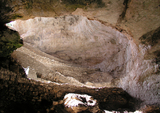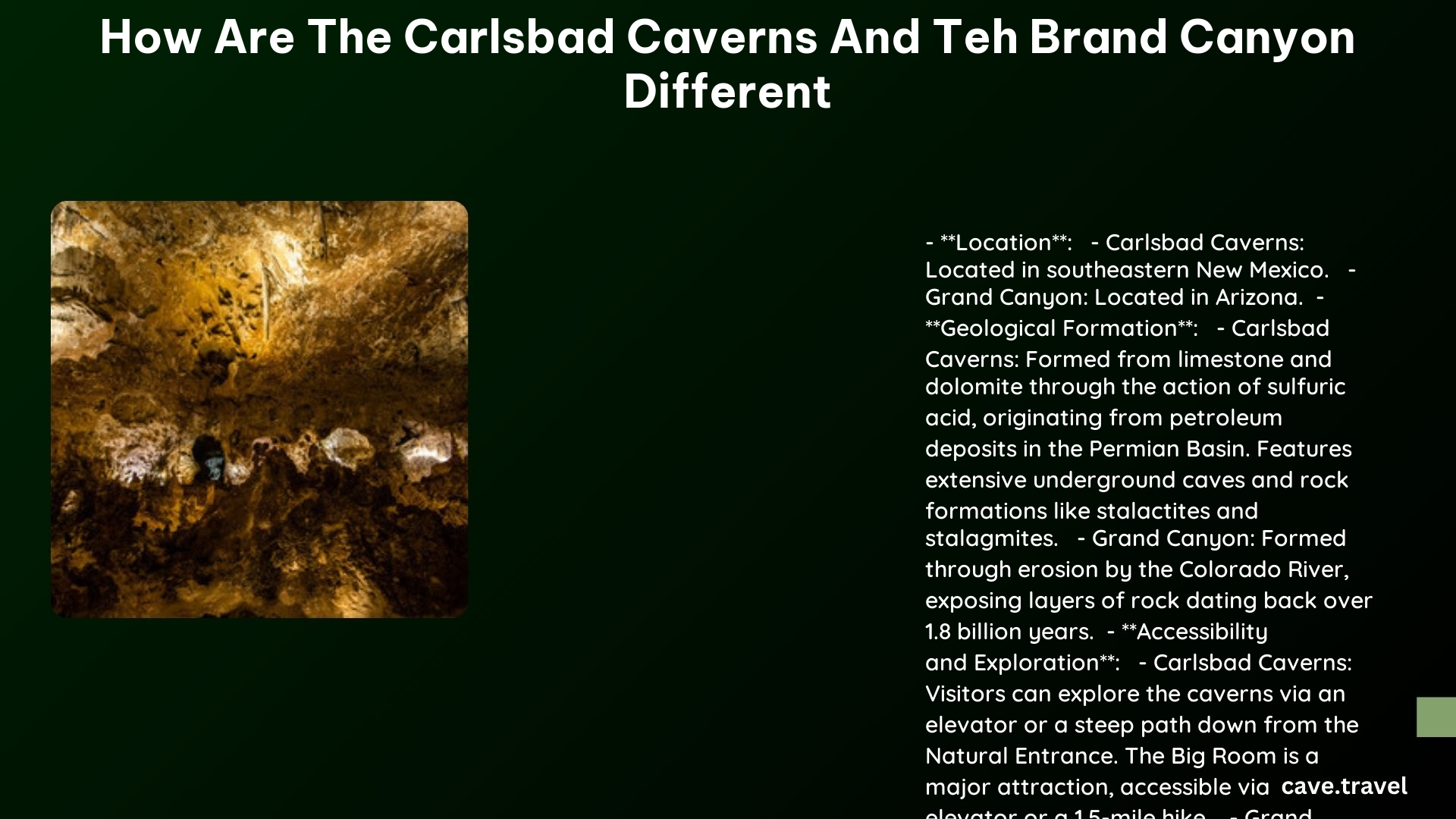Carlsbad Caverns and the Grand Canyon are two of America’s most iconic natural wonders, yet they differ significantly in their formation, geology, and features. Carlsbad Caverns, formed by sulfuric acid dissolution, boasts intricate underground chambers and speleothems. In contrast, the Grand Canyon, carved by the Colorado River, showcases vast, layered rock formations spanning billions of years of Earth’s history. This article explores their distinct characteristics, formation processes, and unique geological features.
What Are the Key Geological Differences Between Carlsbad Caverns and the Grand Canyon?

Formation Process
Carlsbad Caverns
- Formed by sulfuric acid dissolution
- Acid originated from hydrogen sulfide gas oxidation
- Process dissolved limestone and dolomite of the Capitan Reef
Grand Canyon
- Carved primarily by the Colorado River’s erosive action
- Formation began around 70 million years ago
- Additional erosion by wind, rain, and other weather elements
Geological Setting
Carlsbad Caverns
- Part of the Capitan Reef, a Permian-age fossil reef
- Formed approximately 265 million years ago in a shallow sea
- Uplifted and subjected to various geological processes
Grand Canyon
- Located on the Colorado Plateau
- Exposes nearly 2 billion years of Earth’s geological history
- Cuts through 13 distinct rock layers
Types of Formations
Carlsbad Caverns
- Speleothems: stalactites, stalagmites, flowstone, cave popcorn
- Primarily composed of calcite and other minerals
- Deposited from the solution of limestone and dolomite
Grand Canyon
- Layered rock formations with diverse mineral content
- Includes limestone, sandstone, shale, and other rock types
- Contributes to the colorful appearance of canyon walls
How Do the Scales and Accessibility of These Natural Wonders Compare?

| Feature | Carlsbad Caverns | Grand Canyon |
|---|---|---|
| Type | Underground system | Above-ground canyon |
| Largest Chamber | Big Room: 4,000 ft long, 625 ft wide, 350 ft high | N/A |
| Overall Size | N/A | 277 miles long, up to 18 miles wide, over 1 mile deep |
| Accessibility | Underground tours | Rim viewpoints, hiking trails, rafting |
What Unique Features Does Each Location Offer?
Carlsbad Caverns
- Bat Flight Amphitheater
- The Chandelier (unique speleothem)
- Frozen waterfalls (flowstone formations)
Grand Canyon
- Diverse hiking trails
- Colorado River rafting
- Rim-to-rim hiking opportunities
How Do the Formation Mechanisms Differ?
- Carlsbad Caverns: Chemical dissolution by sulfuric acid
- Grand Canyon: Mechanical erosion by the Colorado River and weather elements
What Can We Learn from the Frozen Waterfalls in Carlsbad Caverns?
- Formation Process:
- Slow and continuous deposition of minerals from solution
- Water rich in calcium carbonate drips or flows through caverns
-
Deposits layers of calcite, forming smooth, flowing sheets of stone
-
Significance:
- Provide insights into the geological history of the caverns
- Rate of deposition and isotopic composition used for dating
- Help understand past environmental conditions
How Do These Differences Impact Visitor Experiences?
Carlsbad Caverns
- Underground exploration
- Guided tours through intricate cave systems
- Opportunity to witness unique speleothem formations
Grand Canyon
- Vast, panoramic views
- Diverse outdoor activities (hiking, rafting, camping)
- Opportunity to observe billions of years of geological history in exposed rock layers
What Scientific Value Do These Locations Offer?
Carlsbad Caverns
- Study of unique cave formation processes
- Research on microbial life in extreme environments
- Understanding of ancient reef ecosystems
Grand Canyon
- Geological record spanning nearly 2 billion years
- Study of erosion and landscape evolution
- Research on climate change impacts on arid environments
Carlsbad Caverns and the Grand Canyon, while both geological marvels, offer distinctly different experiences and scientific insights. Their contrasting formation processes, scales, and features make them unique destinations for both casual visitors and scientific researchers. Understanding these differences enhances appreciation for the diverse geological wonders found within the United States.
